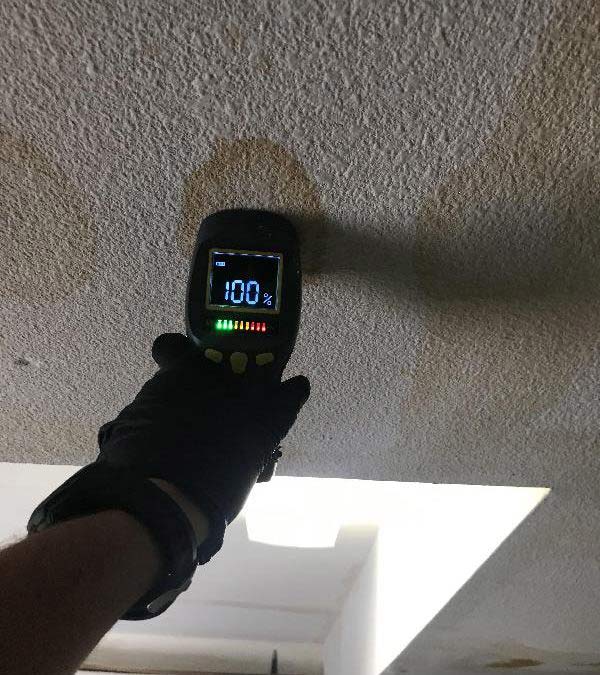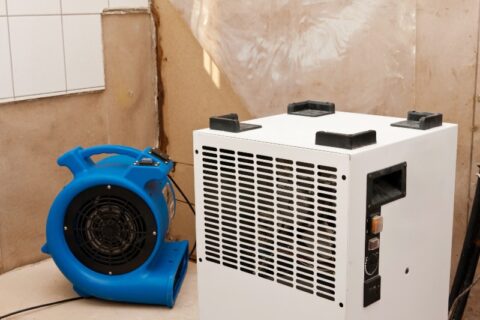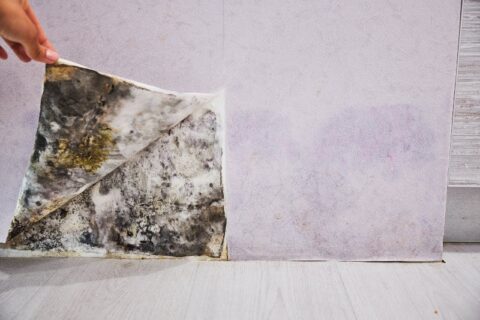What Do You Do if Your Ceiling Has Water Damage?

There’s nothing more alarming than spotting a bulging, yellowish-brown spot on the ceiling. Roof leaks, burst pipes, and overflowing toilets from the bathroom above can all lead to ceiling water damage. Even if the drywall isn’t sagging yet, cracked or peeling paint and discoloration are signs you should act fast to resolve the problem. Here’s what to do if your ceiling has water damage.
Find and Fix the Source of the Leak
Fixing a water-damaged ceiling without repairing the leak will allow more problems in the future. Water can travel in unexpected ways from the source, so you may want a professional inspector to take a look. Just keep in mind that ceiling leaks most often start in one of two places—the roof or the plumbing. To ensure this doesn’t happen again, identify and fix the problem during your home restoration.
Remove the Damaged Section of the Ceiling
For the easiest cleanup, lay a drop cloth on the floor and keep a bucket handy. Wet drywall crumbles and should be quite easy to remove with a box cutter. If the damaged section is over one square foot, consider replacing the entire drywall panel because it will need to be anchored to the ceiling joists for stability. Remember to replace any damaged insulation as well.
Dry Out the Wet Ceiling
Even if you tear out and replace the most damaged section, chances are the water has spread further than this. To save on home restoration costs, it may be possible to dry out part of the ceiling rather than replace large sections of it.
For the best results, you’ll need high-volume fans and a structural drying dehumidifier. Professional water damage restoration companies use these specialized tools to remove moisture quickly and effectively from drywall and ceiling joists, thus preventing mold growth. Water can linger deep inside the ceiling if the drying equipment is shut off too early, so rely on readings from a moisture meter to tell whether it’s really dry.
Repair the Water-Damaged Ceiling
Cut a new piece of drywall a little smaller than the portion you removed and screw it into the joists. Seal the gaps around the patch with mud and tape. Then, seal the new drywall with at least two coats of primer, followed by paint. If your ceiling is textured, you may need special equipment to blend this patched area with the rest of the drywall.
You can attempt ceiling restoration work yourself—or you can skip the hassle and ensure the best results by calling a professional for water damage repair. Pacific Flood Restoration is ready to help! As a leading water damage restoration company in San Diego, we can clean your water-damaged ceiling from start to finish. Our services include structural drying, personal content restoration, deodorizing, mold removal, and final cleanup. We’ll work with your insurance company to restore your home as quickly as possible. Call us 24/7 at 760-815-3033 or contact us online the next time you discover ceiling water damage.


